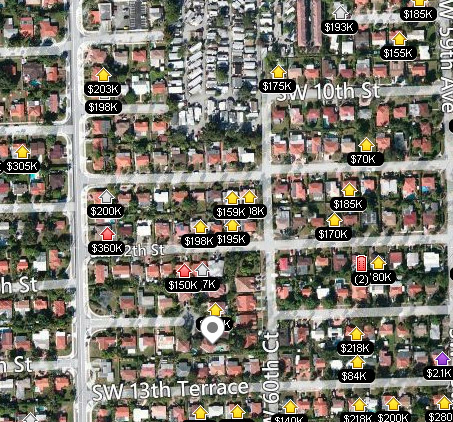Last night, Marco Rubio became the butt of jokes and Twitter gag accounts for awkwardly reaching towards a poorly placed bottle of water, about which more than enough has already been said. But he raised hackles for something else that went on to bug me a bit, in the context of urbanism and how people live in cities:
Mr. President, I still live in the same working class neighborhood I grew up in. My neighbors aren’t millionaires. They’re retirees who depend on Social Security and Medicare. They’re workers who have to get up early tomorrow morning and go to work to pay the bills. They’re immigrants, who came here because they were stuck in poverty in countries where the government dominated the economy.
When people found out that Rubio had purchased his home for $550,000, and is attempting to sell it for $675,000 in order to move to Washington, he was mocked yet again, often out of context; Rubio said his neighborhood was working-class, not his house.
But Rubio had a point; working-class is a loaded term, but Rubio's home isn't in a ritzy neighborhood, and there are plenty of bargains surrounding his house. For instance:

Rubio's house is marked by the gray icon. The $150k house is a bargain, but it needs work. The house that sold for $84k on the next block? It's small, but looks like it's in decent shape.
That cluster of white-roofed buildings three blocks away? That's a trailer park. (It might actually be literally under "Trailer Park" in Wikipedia.) Yes, he lives in a several-hundred-thousand-dollar house with a pool and three bathrooms; he's also a short walk from a hotel/trailer-park combo. Cities are like that; broadly speaking, it's healthy to have that kind of income mix.
Rubio lives in West Miami, which is its own tiny city, and the prices are in keeping with the nature of the city. The median household income for West Miami is around $35k, which is basically the same as Bridgeport. It's a few thousand dollars higher than the median household income of Miami, but its poverty rate is significantly lower. In 2000, Spanish was the first language for almost ninety percent of its residents.
If Rubio really wanted to live it up, he'd move to neighboring Coral Gables, home of the University of Miami. The median household income for Coral Gables is more than twice that of West Miami. And you can tell the difference from space:

West Miami ends at 57th Avenue, and things immediately get greener, in keeping with neighborhood disparities around the world.


